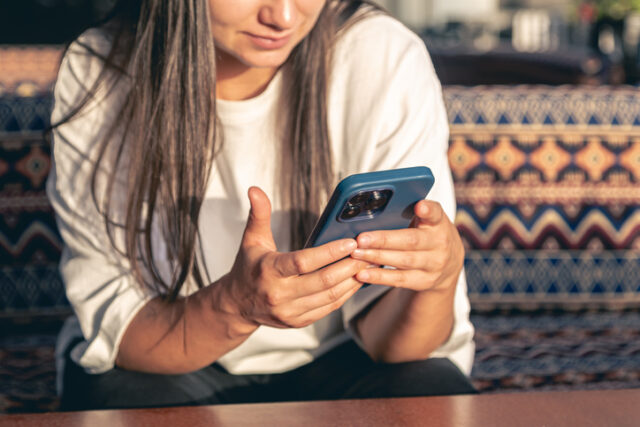It’s weird to think that despite the constant distractions and noise surrounding us, most of us still get bored sometimes.

We sit there staring at our phones, switching between the same three apps, feeling that restless energy. We want to do something (or at least feel like we should be), but we’re just not sure what. Instead of falling into another social media loop, here’s what actually works.
1. Reorganise your digital world instead of your physical one.

Skip the wardrobe cleanout and tackle your phone’s camera roll or that mess of bookmarks instead. Start with the last three months of photos, deleting doubles and creating albums as you go. Move through your browser bookmarks next, sorting them into folders that make sense for how you actually use them. Clean up your email subscriptions while you’re at it — most of us only read about 20% of what lands in our inbox. Digital decluttering gives you that same satisfaction as physical organising but takes way less energy. Plus, you’ll actually notice the difference every single day.
2. Create a personalised troubleshooting guide for yourself.

Document solutions to problems you keep facing but always forget how to fix. Write down those weird computer issues that pop up every few months, or the steps to reset your router when it acts up. Note the exact settings that work best for your coffee maker, or which size container actually fits your leftover pasta. Keep track of where you filed important documents or which backup codes go with which accounts. This becomes your personal technical manual for future-you, saving hours of re-googling the same solutions. Future boredom is often just past problems we forgot how to solve.
3. Build a personal knowledge database that matters.
 Source: Unsplash
Source: Unsplash Start collecting the random but useful information you come across daily. Note down that perfect pasta cooking time you finally figured out, or the exact name of that font you love. Save the route to that hidden beach, or the correct settings for washing your favourite jumper. Add recommendations from friends for books, restaurants, or movies as they mention them. Create a simple system using your notes app or a dedicated notebook. These small bits of information build into a personalised reference that’s actually relevant to your life. It’s like creating your own wiki of things you’ll actually use.
4. Practice real-world survival skills through your phone.

Learn to navigate using the sun’s position or find water sources in your area using satellite maps. Study local edible plants through identification apps, or learn basic first aid specific to your region’s risks. Familiarise yourself with your city’s emergency routes and safe zones. Download offline maps of your frequent destinations. Practice these skills through your phone first, then test them in the real world when you have time. These skills stay with you long after your phone battery dies.
5. Create templates for recurring life situations.

Design formats for those emails you keep rewriting from scratch — like scheduling appointments or following up on plans. Draft messages for cancelling subscriptions, requesting refunds, or handling common work scenarios. Write out your go-to recipes with exact measurements and timing. Build a packing list template that covers different trip lengths and seasons. These templates transform future tasks from time-consuming rewrites into simple fill-in-the-blank exercises. You’re essentially sending efficiency forward in time.
6. Build a personal command centre.

Set up a simple dashboard with your most-used information — emergency contacts, account numbers, medication details, or key dates. Include those random numbers you’re always searching for, like your printer’s model or your car’s tire pressure specs. Add your own body metrics — from shoe size to prescription numbers. Keep your frequent flyer numbers, loyalty program IDs, and software licence keys in one spot. This becomes your life’s reference sheet, accessible whenever you need it. The best organisation system is the one that matches how your brain actually looks for information.
7. Create instruction manuals for your routines.

Write down step-by-step guides for your most effective workout, your ideal morning sequence, or your meal prep system. Detail your best productivity workflows or how you get back on track after falling off habits. Include the small tricks and tweaks you’ve discovered work specifically for you. Note the warning signs that tell you when these systems are starting to slip. This becomes your personal standard operating procedure, helping you maintain consistency even when motivation dips. It’s like having an instruction manual for your best self.
8. Develop your “Plan B” scenarios.

Map out backup plans for common situations — what to do if you lose your phone, your wallet, or your keys. Figure out alternative routes to work or backup childcare options. Research offline entertainment for power outages or internet downtime. Identify backup meeting spots with family or friends for various scenarios. Having these plans ready reduces stress when things go wrong and turns potential emergencies into manageable situations. The best time to figure out Plan B is when you don’t need it.
9. Build a personal finance tracker that works for you.

Create a simple system to track where your money actually goes, not where you think it goes. Start with your last three months of expenses, categorising them in ways that make sense for your life. Look for patterns in your spending and identify your true financial priorities. Set up automatic trackers for recurring bills and subscriptions. This becomes your financial reality check, helping you make decisions based on real data rather than guesses. Understanding your money patterns changes your relationship with spending.
10. Design your ideal schedules for different scenarios.

Create multiple versions of your ideal day — one for high-energy days, one for low-energy days, one for recovery days. Map out different versions of your week based on varying workloads or seasonal changes. Include buffer time for transitions and unexpected events. Plan alternate routines for when your usual schedule gets disrupted. These become your go-to frameworks when life inevitably throws your regular routine off track. Flexibility comes from having multiple systems ready to go.




